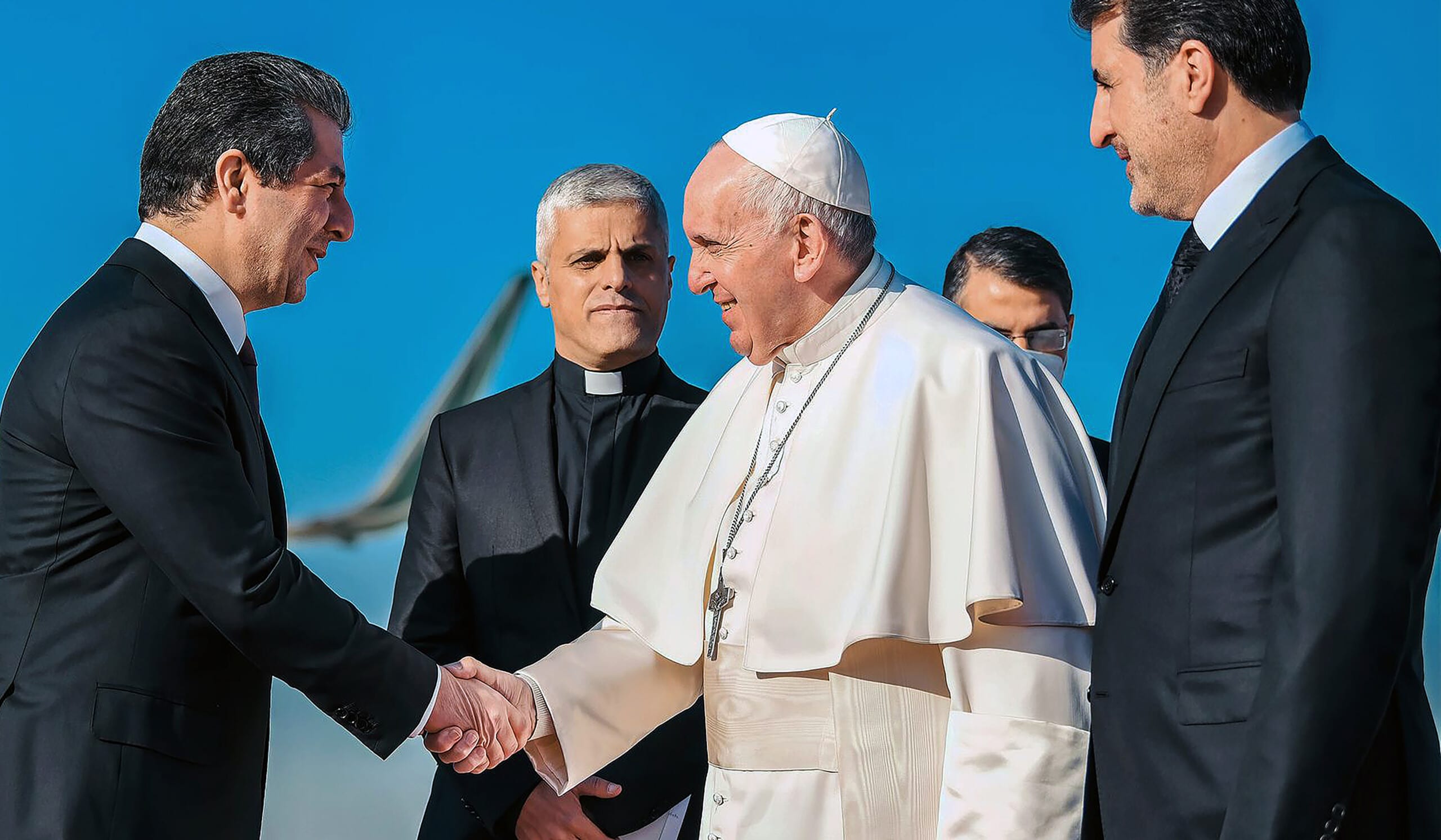What does the pope’s visit mean for Iraq?

What does the pope's visit mean for Iraq?
Currently, Iraq is facing a human rights crisis. The crisis is partly spurred by conflicting religious geopolitics, corruption within the government, and extremist groups. This has resulted in much violence as well as human rights abuses within the country. Last week, Pope Francis visited Iraq after having accepted an invitation from the president of Iraq, Barham Salih in 2019. Choosing to go to Iraq after a 15-month hiatus due to international travel restrictions from COVID 19 emphasized the importance of the trip (Horowitz et al., 2021).
The pope’s visit played three critical roles. The first and arguably the most important was to send a unifying message of peace, especially, to those affected by religious atrocities within Iraq. The pope met with several religious leaders and spoke about religious coexistence and freedom. This message could not be clearer than through his visit to Qaraqosh, a city in Northern Iraq that is predominantly Christian. This city had previously been hit with waves of violence between Iraqi forces and their allies against ISIS fighters (Combs & Saman, 2021). The pontiff’s travels also included visiting other historical sites and cities, such as the city of Ur where the prophet Abraham was said to be born. Here, the pope made a speech during mass calling for peace among Abrahamic religions.
Second, it served the ability to empathize and acknowledge the pain of the Christians, Yazidis, and other religious minorities, which have been hit hard due to ISIS and extremist attacks within those communities. These religious minorities have suffered mass violence and atrocities, including the destruction of homes and cities. So, the arrival of the pope, a well-respected religious leader, gave a sense of compassion and hope to these communities, something which other western leaders could, perhaps, not have succeeded with during a visit (France24, 2021).
Third, was bringing awareness to the cultural-historical roots of Iraq in efforts to preserve them. During the pope’s visit, much attention was drawn to Iraq as well as the historical and religious sites the pope visited. This could, potentially, draw international attention to not only appreciate the beauty within Iraq but also add a sense of duty to protect it.
However, there are some criticisms of the pope’s visit, the first being that the pope’s visit will not result in any real change, as it plays more of a symbolic role with no reported plans of follow-up actions. The day after the pope’s visit, ISIS militants killed seven people, north of Baghdad. The victims were all relatives, who ISIS claimed were spies (Tawfeeq et al., 2021). Furthermore, the images of Iraq that accompanied the pope do not fully reflect Iraq’s current reality. Many of the city’s leaders and communities cleaned up their cities to look presentable for the pope’s arrival, hiding the areas where real atrocities and damage is taking place (Tharoor, 2021). City leaders also spent a lot of money on refurbishing the cities for the pope’s visit, money that could have gone towards the victims of the atrocities. The last criticism has to do with COVID-19. Large crowds gathered to get a view of the Pontiff, however, Iraq is suffering from a rise in COVID cases while Iraq’s health system has become extremely weakened due to waging violence. This raised concerns about COVID spreading amongst the crowds of people. Overall, the pope’s visit was a historic moment for the people of Iraq, and we can only hope that it will spark the change for the human rights issues within Iraq as well.

Article by
Nikki Mulan Muggli



